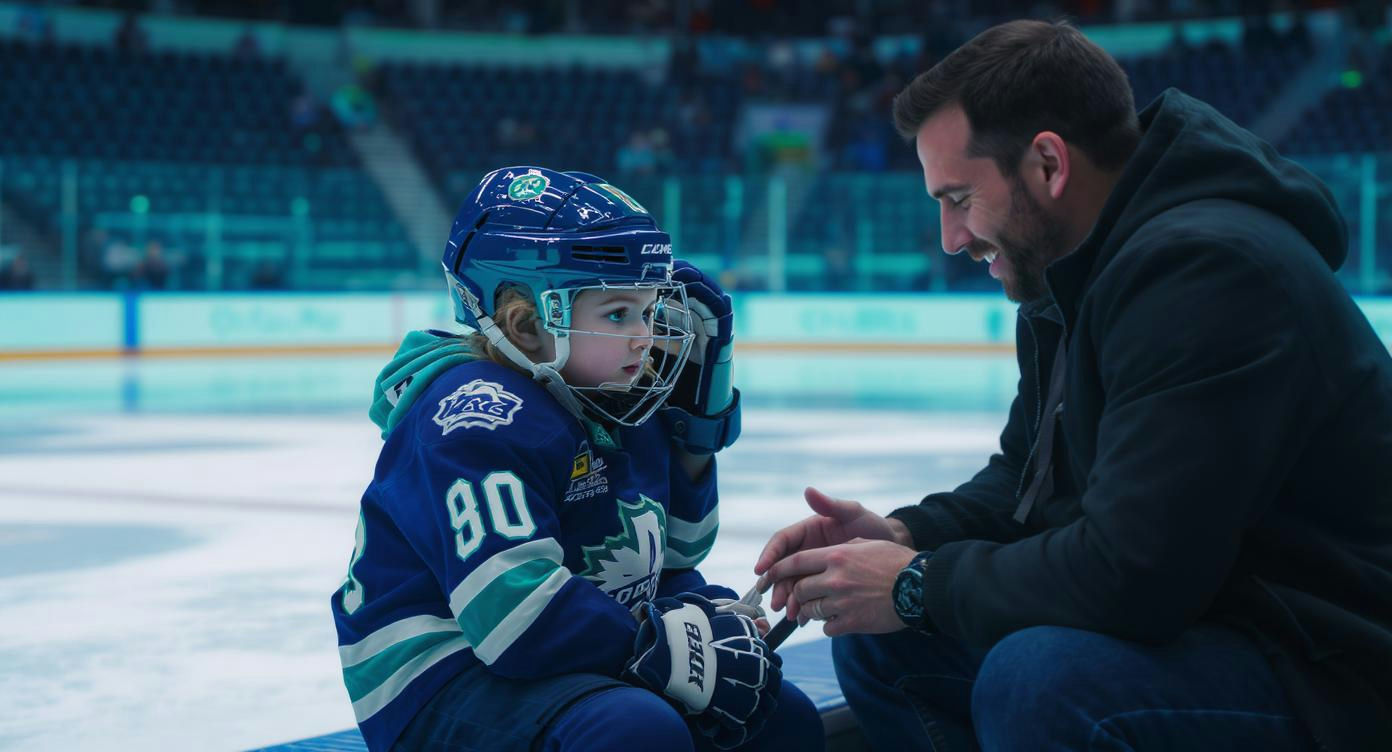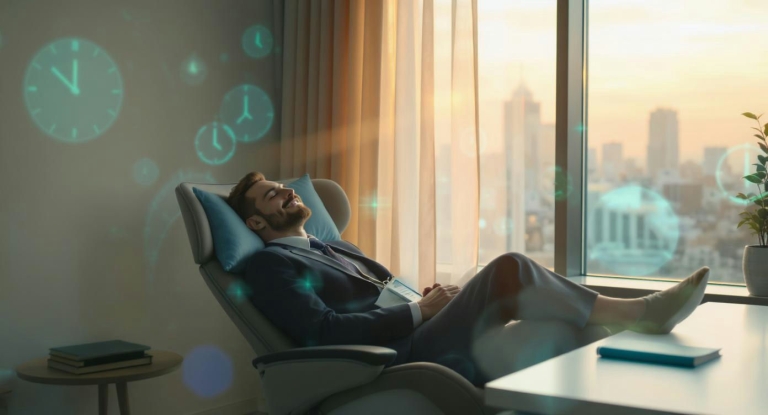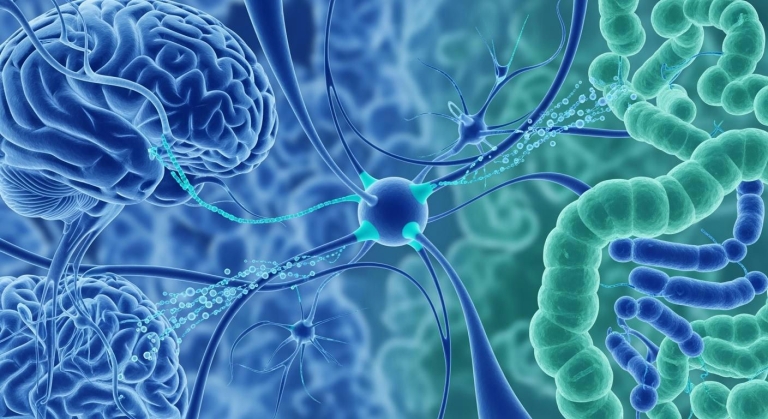Concussion in Youth Sports: What Every Toronto Parent Should Know
Concussion in Youth Sports: What Every Toronto Parent Should Know
Executive Summary
Concussions affect approximately 200,000 Canadian children annually, with sports accounting for 44% of these injuries. This comprehensive guide helps Toronto parents understand concussion risks, recognition, response, and management in youth sports. Learn about proper protocols, when to seek medical attention, and how to navigate the recovery process.
Table of Contents
- Understanding Concussions: More Than Just a Bump
- Recognizing the Signs: What Parents Need to Watch For
- The Critical First 48 Hours: Your Action Plan
- Navigating Toronto’s Healthcare System for Concussion Care
- The Return-to-Play Protocol: A Gradual Approach
- Prevention Strategies: Reducing Concussion Risk
- Long-Term Management: Supporting Recovery and Return
- Technology and Concussion Management
- Building Your Concussion Response Team
- Moving Forward: Balanced Perspective on Youth Sports
- Frequently Asked Questions
Picture this: Your 12-year-old daughter just took a hard fall during her hockey game at North Toronto Arena. She says she’s fine, eager to get back on the ice, but you noticed she seemed dazed for a moment. As a parent, you’re faced with a critical question that thousands of Toronto families encounter each sports season: Is this just a minor bump, or could it be something more serious?
Every year, an estimated 200,000 concussions occur among Canadian children and youth, with sports activities accounting for approximately 44% of these injuries. Yet despite their frequency, concussions remain one of the most misunderstood injuries in youth sports. Understanding how to recognize, respond to, and manage concussions can make the difference between a safe recovery and long-term complications for young athletes.
This guide will walk you through everything Toronto parents need to know about youth sports concussions—from the ice rinks of Etobicoke to the soccer fields of Scarborough. You’ll learn how to spot the signs that coaches might miss, understand why young brains need special protection, and discover practical steps to keep your child safe while still enjoying the sports they love.
Understanding Concussions: More Than Just a Bump on the Head
A concussion is a type of traumatic brain injury caused by a bump, blow, or jolt to the head—or even a hit to the body that causes the head and brain to move rapidly back and forth. This movement can cause chemical changes in the brain and sometimes stretch or damage brain cells.
What makes concussions particularly concerning in youth sports is that young brains are still developing. The teenage brain continues maturing until approximately age 25, making it more vulnerable to injury and requiring longer recovery times than adult brains. This vulnerability is compounded by the fact that young athletes may not fully understand the risks or may feel pressure to “tough it out” and return to play.
The Toronto Youth Sports Landscape
In Toronto, where youth participation in organized sports is exceptionally high, understanding concussion risks becomes even more critical. From rep hockey leagues to competitive soccer clubs, our city’s young athletes face unique challenges. The competitive nature of many programs, combined with year-round training schedules, can create environments where injuries might be overlooked or minimized.
Popular youth sports in Toronto with higher concussion risks include:
- • Ice hockey (particularly in body-checking leagues)
- • Canadian football
- • Soccer (especially with heading)
- • Basketball
- • Rugby
- • Lacrosse
Recognizing the Signs: What Parents Need to Watch For
One of the biggest challenges with concussions is that symptoms aren’t always immediate or obvious. Unlike a broken bone or a cut, brain injuries can be invisible, and symptoms may not appear for hours or even days after the injury.
Immediate Warning Signs
If your child experiences any of these symptoms after a hit or fall, seek medical attention immediately:
- • Loss of consciousness (even briefly)
- • Convulsions or seizures
- • Extreme drowsiness or inability to wake up
- • Repeated vomiting
- • Slurred speech
- • Weakness or numbness in arms or legs
- • Unusual behavior or increased confusion
- • One pupil larger than the other
Common Concussion Symptoms to Monitor
Watch for these signs in the hours and days following a potential head injury:
Physical Symptoms:
- • Headache or pressure in the head
- • Nausea or vomiting
- • Balance problems or dizziness
- • Double or blurry vision
- • Sensitivity to light or noise
- • Feeling sluggish, hazy, foggy, or groggy
Cognitive Symptoms:
- • Difficulty concentrating or remembering
- • Confusion about recent events
- • Answering questions slowly
- • Repeating questions
Emotional/Mood Symptoms:
- • Irritability
- • Sadness
- • More emotional than usual
- • Nervousness or anxiety
Sleep-Related Symptoms:
- • Sleeping more or less than usual
- • Trouble falling asleep
- • Feeling drowsy during the day
Age-Specific Considerations
Younger children may not be able to articulate their symptoms clearly. Parents should watch for:
- • Excessive crying
- • Loss of interest in favorite activities or toys
- • Changes in eating patterns
- • Persistent irritability
- • Loss of new skills (like toilet training)
The Critical First 48 Hours: Your Action Plan
When a concussion is suspected, the actions taken in the first 48 hours are crucial for proper recovery. Here’s a step-by-step guide for Toronto parents:
Immediate Steps (First 4-6 Hours)
- Remove from play immediately – No child should return to sports activity on the same day as a suspected concussion
- Monitor closely – Stay with your child and watch for worsening symptoms
- Seek medical evaluation – Visit a healthcare provider experienced in concussion management
- Document everything – Note the time of injury, what happened, and all symptoms observed
Care& App Feature: Symptom Tracking
The Care& app can help you document concussion symptoms with timestamps, making it easier to share precise information with healthcare providers. This detailed record-keeping enables more accurate assessment and better care coordination.
Creating a Recovery Environment
The home environment plays a crucial role in concussion recovery. During the initial recovery period:
Reduce stimulation
Dim lights, minimize screen time, and keep noise levels low
Encourage rest
Both physical and mental rest are essential
Maintain routine
Keep regular sleep and meal schedules
Stay hydrated
Ensure adequate water intake
Limit activities
Avoid activities requiring concentration or physical exertion
At Care& Family Health, our Nurse Practitioners understand the unique challenges of managing pediatric concussions. With unrushed appointments that allow time for thorough assessment and parent education, families can get the comprehensive care needed during this critical period.
Navigating Toronto’s Healthcare System for Concussion Care
Finding appropriate concussion care in Toronto can be challenging, especially when many walk-in clinics have limited appointment times that may not allow for the detailed assessment concussions require. Understanding your options helps ensure your child receives proper care.
When to Seek Emergency Care
Head to the nearest emergency department if your child experiences:
- • Loss of consciousness for more than 30 seconds
- • Severe or worsening headaches
- • Repeated vomiting
- • Seizures
- • Extreme confusion or unusual behavior
Toronto hospitals with pediatric emergency departments include:
- • SickKids Hospital
- • North York General Hospital
- • Scarborough Health Network
Primary Care Follow-Up
For non-emergency concussion management, having a healthcare provider who can spend adequate time on assessment and follow-up is essential. Traditional medical clinics often struggle with the time requirements for proper concussion care, as these appointments typically need 20-30 minutes for thorough evaluation.
This is where alternative primary care models can be particularly valuable. Care& Family Health’s Nurse Practitioners can provide the comprehensive, unhurried care that concussion management requires, with the added convenience of virtual follow-up appointments to monitor recovery progress without the need for multiple in-person visits.
The Return-to-Play Protocol: A Gradual Approach
One of the most critical aspects of concussion management is ensuring young athletes don’t return to sports too quickly. Returning before full recovery significantly increases the risk of second-impact syndrome—a rare but potentially fatal condition that can occur when a second concussion happens before the first has healed.
Ontario’s Return-to-Sport Protocol
Ontario follows a standardized six-step return-to-sport strategy:
Step 1: Complete Rest (24-48 hours)
- • No physical or cognitive activity
- • Rest until acute symptoms resolve
Step 2: Light Aerobic Exercise
- • Walking, swimming, or stationary cycling
- • No resistance training
- • Increase heart rate but keep intensity below 70%
Step 3: Sport-Specific Exercise
- • Running drills or skating drills
- • No head impact activities
- • Progressive increase in difficulty
Step 4: Non-Contact Training Drills
- • Harder training drills
- • Progressive resistance training
- • No contact or collision
Step 5: Full-Contact Practice
- • Only after medical clearance
- • Normal training activities
- • Full contact in controlled practice
Step 6: Return to Competition
- • Normal game play
- • Continue monitoring for symptoms
Important:
Each step should take at least 24 hours, and if symptoms return at any stage, the athlete must return to the previous step until symptom-free for 24 hours.
The Importance of Medical Clearance
Before progressing to Step 5 (full-contact practice), athletes must receive written medical clearance. This is where having consistent healthcare access becomes crucial—many Toronto families struggle to find timely appointments for these assessments at traditional medical clinics.
Care& App Feature: Easy Appointment Scheduling
The Care& app allows you to quickly book return-to-play assessment appointments without long wait times. Our Nurse Practitioners have the expertise to provide proper clearance documentation and can offer both in-person and virtual appointments to fit your schedule.
Prevention Strategies: Reducing Concussion Risk
While not all concussions can be prevented, parents and coaches can take meaningful steps to reduce risk:
Equipment and Safety Measures
Proper Equipment Fit:
- • Helmets should fit snugly without wobbling
- • Replace helmets after significant impacts
- • Ensure all protective gear meets Canadian safety standards
- • Regular equipment checks throughout the season
Sport-Specific Considerations:
- • Hockey: Support leagues that delay body checking until appropriate ages
- • Soccer: Advocate for age-appropriate heading restrictions
- • Football: Ensure proper tackling techniques are taught and enforced
Creating a Culture of Safety
Building a safety-first culture in youth sports requires effort from everyone involved:
For Parents:
- • Openly discuss concussion risks with your children
- • Model good behavior by taking head injuries seriously
- • Support coaches who prioritize safety over winning
- • Know your child’s baseline behavior and performance
For Young Athletes:
- • Encourage reporting symptoms immediately
- • Teach that playing through a concussion isn’t brave—it’s dangerous
- • Foster team support for injured players
- • Emphasize that temporary time off is better than permanent injury
Baseline Testing Benefits
Consider baseline neurocognitive testing before the sports season begins. These tests measure normal brain function and can help healthcare providers better assess if a concussion has occurred and when recovery is complete. Several Toronto sports organizations now require or recommend baseline testing for contact sports.
Long-Term Management: Supporting Recovery and Return
Concussion recovery isn’t always linear. Some young athletes may experience setbacks or prolonged symptoms that require ongoing management and support.
Academic Accommodations
During recovery, students may need temporary academic adjustments:
Common Accommodations:
Work with your child’s school to implement a gradual return-to-learn protocol, similar to the return-to-sport approach. Most Toronto District School Board schools have concussion protocols in place.
Managing Persistent Symptoms
If symptoms persist beyond 4 weeks, your child may have post-concussion syndrome. This requires specialized care and may include:
- • Referral to a concussion specialist
- • Vestibular therapy for balance issues
- • Cognitive behavioral therapy for mood symptoms
- • Gradual exercise therapy under medical supervision
Having a primary healthcare provider who can coordinate this care and provide regular monitoring becomes invaluable. At Care& Family Health, the ability to book unlimited appointments means families never have to delay necessary follow-ups or worry about the cost of multiple visits during the recovery process.
Nutrition and Lifestyle Support
Supporting brain healing through nutrition and lifestyle:
Nutrition Tips:
- • Omega-3 rich foods (fish, walnuts, flaxseed)
- • Antioxidant-rich fruits and vegetables
- • Adequate protein for tissue repair
- • Limit processed foods and excess sugar
- • Stay well-hydrated
Sleep Hygiene:
- • Consistent bedtime routine
- • Dark, cool room
- • No screens 1 hour before bed
- • Avoid caffeine after noon
- • Regular wake times, even on weekends
Technology and Concussion Management
Modern technology offers new tools for concussion assessment and management. Several apps and digital platforms can help Toronto parents track symptoms and recovery progress.
Care& App Features for Concussion Management
The Care& Family Health app allows parents to maintain detailed health records, track symptom progression, and communicate with healthcare providers between appointments. This continuous monitoring capability can be particularly valuable during concussion recovery when symptoms may fluctuate daily.

Useful Digital Resources
Symptom Tracking:
- • Document daily symptoms and severity
- • Note triggers that worsen symptoms
- • Track sleep patterns and quality
- • Monitor gradual improvement
Educational Resources:
- • Parachute Canada’s concussion guidelines
- • Ontario Neurotrauma Foundation resources
- • Sport-specific concussion protocols
- • Age-appropriate educational materials for athletes
Building Your Concussion Response Team
Effective concussion management often requires a team approach. Building your support network before an injury occurs ensures you’re prepared if needed.
Your Healthcare Team Should Include:
Primary Healthcare Provider:
- • Regular monitoring and coordination of care
- • Return-to-play clearance
- • Referrals to specialists when needed
- • Ongoing symptom management
School Support:
- • Teachers aware of concussion impacts
- • School nurse or designated concussion contact
- • Guidance counselor for academic planning
- • Communication system for symptom updates
Sports Organization:
- • Coaches trained in concussion recognition
- • Clear concussion protocols
- • Designated safety person at games/practices
- • Support for gradual return-to-play
Community Resources in Toronto
Take advantage of local resources:
- • Holland Bloorview Kids Rehabilitation Hospital concussion clinic
- • Toronto Rehabilitation Institute
- • Local sport organizations with concussion education programs
- • Parent support groups through sports associations
Moving Forward: Balanced Perspective on Youth Sports
While concussion risks are real and serious, it’s important to maintain perspective. The benefits of youth sports participation—physical fitness, teamwork, discipline, and social development—remain significant. The goal isn’t to eliminate all risk but to manage it intelligently.
By staying informed, maintaining open communication with your young athlete, and having access to appropriate healthcare when needed, you can help ensure that sports remain a positive part of your child’s development. Remember that most youth athletes who experience concussions recover fully with proper management.
For Toronto families navigating youth sports, having reliable healthcare access for both preventive guidance and injury management makes all the difference. Whether it’s baseline assessments before the season starts or comprehensive care if an injury occurs, ensuring your family has consistent medical support helps keep young athletes safe while pursuing their passions.
Frequently Asked Questions
Q: How long does a typical concussion take to heal in young athletes?
Most youth concussions resolve within 2-4 weeks with proper rest and gradual return to activities. However, recovery time varies significantly based on factors like age, severity of injury, and previous concussion history. Younger athletes often require longer recovery periods than adults. It’s crucial to follow your healthcare provider’s guidance rather than arbitrary timelines, as rushing recovery can lead to prolonged symptoms or re-injury.
Q: Can my child get a concussion even without hitting their head directly?
Yes, concussions can occur without direct head impact. Any force that causes the brain to move rapidly inside the skull can cause a concussion. This includes whiplash-type movements from body checks in hockey, hard falls in basketball, or collision impacts in soccer. Understanding this helps parents recognize that any significant impact during sports warrants attention, even if the head wasn’t directly involved.







